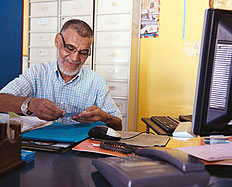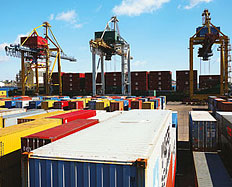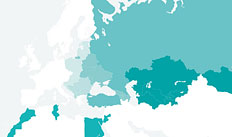Chapter 4
Customs Union and Common Economic Space: an overview
The idea of a deeper regional economic integration within the Commonwealth of Independent States (CIS) is not new. It was put forward in the early 1990s by a number of economists, and the term Eurasian Economic Community was coined by Nursultan Nazarbayev, the President of Kazakhstan, in March 1994. However, progress towards integration has been slow; although an agreement to create a CIS free trade area was reached in principle in 1994, an actual free trade agreement was only signed 17 years later.
The integration process gained political momentum in November 2009 when Belarus, Kazakhstan and Russia signed an agreement establishing a Customs Union and started applying a common import tariff from 1 January 2010.2 Internal border controls were removed, first between Belarus and Russia and then between Kazakhstan and Russia. Under the Customs Union framework, import tariff revenues accrue to national budgets in predetermined proportions (with Russia entitled to 88 per cent, Kazakhstan to 7 per cent and Belarus to 5 per cent, but subject to regular review). The Union is open to other countries provided that they share a common border with the existing members. Within the CIS, this stipulation currently precludes Armenia, Moldova and Tajikistan, but the Kyrgyz Republic is considering membership and Ukraine has been invited to join.
The next stage was launched on 1 January 2012 with the creation by Belarus, Kazakhstan and Russia of the Common Economic Space of the Eurasian Economic Community. It involves developing supranational institutions, modelled explicitly or implicitly on those of the European Union, headed by the Eurasian Economic Commission, with nine commissioners responsible for various areas of economic integration. The Commission is expected to gradually assume some of the competencies of national authorities, including import tariff-setting (previously delegated to its predecessor, the Customs Union Commission), technical regulations and competition policy.
Key decisions within this supranational framework will be taken by the Council of Country Representatives based on the one country-one vote principle. In some cases decisions require unanimous approval. The decisions of the supranational bodies become legally binding for member countries a certain period after their publication and will prevail over any inconsistent national norms. Any disputes can be taken to the Economic Court of the Eurasian Economic Community, the decisions of which are binding on member states.
The Eurasian Development Bank, based in Almaty in Kazakhstan, has a broader membership beyond the Customs Union countries and includes Armenia, the Kyrgyz Republic and Tajikistan. The Bank currently has an Anti-Crisis Fund (ACF) programme to help Belarus (subject to policy conditions and regular reviews), under which two disbursements totalling US$ 1.24 billion were made in 2011. Tajikistan is also a beneficiary of a US$ 70 million ACF programme.
The ultimate goal of the Eurasian Economic Community is free movement of goods, capital and people, as well as the harmonisation of macroeconomic and structural policies. As of 2012 the member countries agreed to codify various existing agreements and treaties by 2015 and then discuss steps towards further integration.
2 For a small number of products (including cars for personal use and pharmaceuticals) special transition arrangements have been agreed for Belarus and Kazakhstan.







